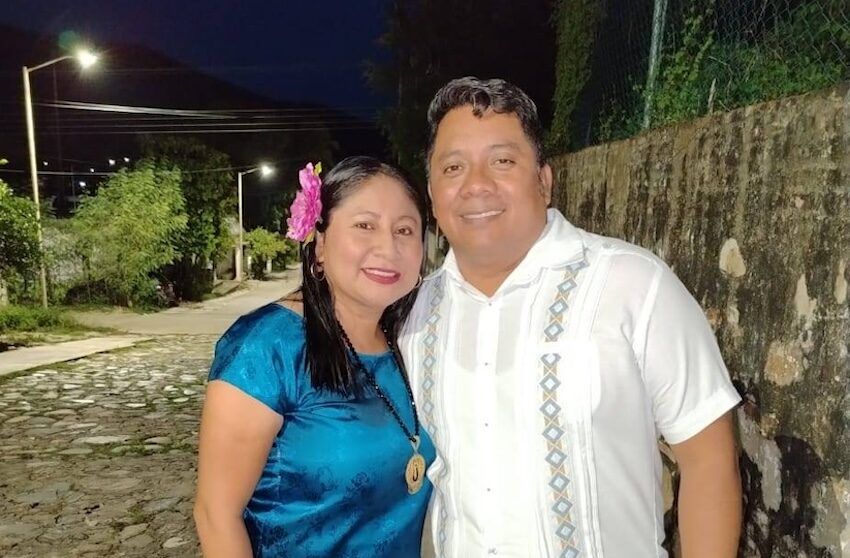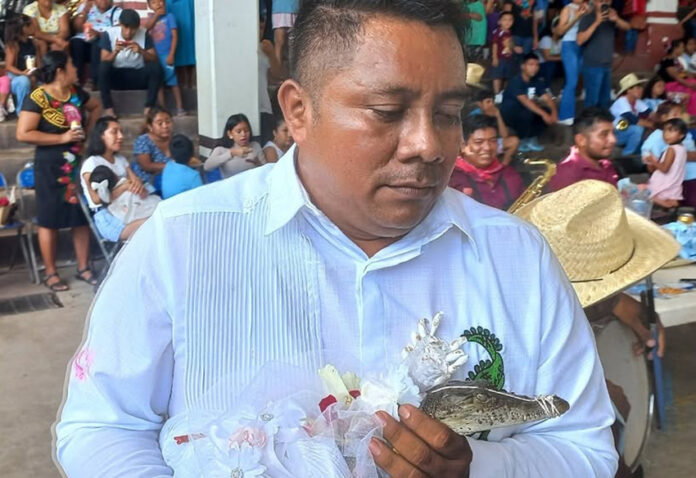Daniel Gutiérrez Peña, mayor of the municipality of San Pedro Huamelula in the southern state of Oaxaca, married a female caiman in a symbolic ceremony known as the Wedding of the Caiman.
The ritual, which dates back 230 years, symbolizes respect and unity among the Chontal and Huave Indigenous communities of the region. It has its origins in a legend of a royal marriage uniting the Chontal with the Huave to seal peace and brotherhood between their peoples.

In the ceremony, the mayor represents the Chontal king and the caiman a Huave princess. Caimans are scaly lizards similar to small alligators.
Since then, the ritual has been practiced as a means to keep the connections between these original communities of the Isthmus of Tehuantepec alive.
“This is a historic moment that happens every year,” Mayor Gutiérrez told the press. “It’s a celebration that unites two peoples, two cultures, two brotherhoods.”
As part of the ritual, the caiman is dressed in a white wedding dress and for safety reasons, its snout is tied. The community, dressed up in festive costumes, accompanies the symbolic union with processions, dances, and offerings as the “princess bride” parades through the town visiting homes.
View this post on Instagram
The festivity spans three days of vibrant cultural traditions. The reptile is dressed by a woman known as the godmother in three different traditional garments, one a colorful Zoque dress complete with a skirt and floral headdresses.
This year’s reptile bride was named by locals Miguelana Estela del Mar Zavaleta Ramírez.
Beyond its social symbolism, the ritual is also a spiritual offering. Indigenous peoples believe that the wedding serves as a prayer for abundant harvests, as well as blessings from Mother Earth and the Creator.
“For us, it’s a ritual in which we ask mother earth and our creator for abundance in our harvests, fishing, and every product our region can offer,” Luis Manuel López, a resident of the town, told Reuters.
In a religious syncretism combining pre-Columbian traditions with Catholic beliefs, the symbolic ceremony marks the end of the patron saint festivities in honor of San Pedro Apostol.
The blend of cultures has enriched the ritual, which today is a source of pride and celebration for the inhabitants of San Pedro Huamelula.
“Huamelula is so rich in tradition and culture that today, like every year, Huamelula is in the eyes of the world,” Mayor Gutiérrez said.
